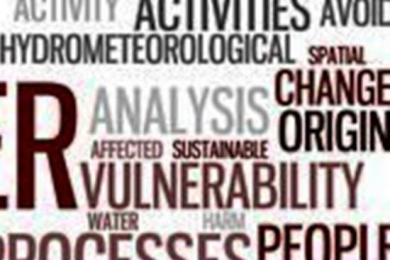An Open-ended Intergovernmental Expert Working Group on Indicators and Terminology was established by the UN General Assembly in June 2015, as a way to steer efforts regarding indicators to assess advances in the context of the seven targets established in the Sendai framework for Disaster Risk Reduction 2015-2030. The experts in this OEIWG are nominated by Member States (countries). By June 2016, 255 experts form 107 Member States have been nominated to participate in the OEIWG.
UNDRR organized the third meeting of the OEIWG in September 2015 to examine and discuss the indicators to monitor the 7 Global Targets established on the Sendai Framework. The whole document is available here.
There are vital issues to be considered by the OEIWG including: the scope of the indicators (including hazard category and data collection), the normalization, temporal issues , terminology and indicators, disaggregation in targets a and b, affected people, direct economic loss, indirect economic loss, damage to critical infrastructure and facilities and disruption of basic services, national disaster Loss Database, national self-assessment, coherence with SDG’s and Climate Change convention, coherence with other official national statistics and data set owned by sectors, baseline development, evolution of data collection and roles and responsibilities.
The list bellow shows one example of a recommended global indicator for each target:
Target A: Substantially reduce global disaster mortality by 2030. Aiming to lower average per 100,000 global mortality between 2020-2030 compared to 2005-2015
Indicator:
A-1 Number of deaths and missing due to hazardous events per 100,000.
Target B: Substantially reduce the number of affected people globally by 2030, aiming to lower the average global figure per 100,000 between 2020-2030 compared to 2005-2015
Indicator:
B-1 Number of affected people per 100,000
Target C: Reduce direct disaster economic loss in relation to global gross domestic product (GDP) by 2030
Indicator:
C-1 Direct economic loss due to hazardous events in relation to global gross domestic product.
Target D: Substantially reduce disaster damage to critical infrastructure and disruption of basic services, among them health and educational facilities, including through developing their resilience by 2030
Indicator:
D-1 Damage to critical infrastructure due to hazardous events
Target E: Substantially increase the number of countries with national and local disaster risk reduction strategies by 2020
Indicator:
E-1 Number of countries that adopt and implement national DRR strategies in line with the Sendai Framework for Disaster Risk Reduction 2015- 2030
Target F: Substantially enhance international cooperation to developing countries through adequate and sustainable support to complement their national actions for implementation of this framework by 2030
Indicator:
Under examination by UNDRR
Target G: Substantially increase the availability of and access to multi-hazard early warning systems and disaster risk information and assessments to the people by 2030
Indicator:
G-1 Number of countries that have multi-hazard early warning system

